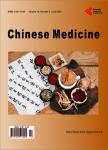A Unifying Theory of Aging between Modern Medicine and Traditional Chinese Medicine
A Unifying Theory of Aging between Modern Medicine and Traditional Chinese Medicine作者机构:Division of Life Science Hong Kong University of Science & Technology Hong Kong China
出 版 物:《Chinese Medicine》 (中医(英文))
年 卷 期:2020年第11卷第2期
页 面:105-112页
学科分类:08[工学] 080502[工学-材料学] 0805[工学-材料科学与工程(可授工学、理学学位)]
主 题:Aging Theory Modern Medicine Chinese Medicine Mitochondria
摘 要:With the increasing aging population around the world as a result of birth rates and advances in medical technologies, there is an urgent need to unravel the primary cause of aging, in the hope of developing a rational approach to retard the aging process. This is crucial to reduce the societal impact of aging. Although modern medicine and traditional Chinese medicine view the process of aging from different perspectives, this article aims to develop a common understanding between these two distinct medical systems in relation to the aging process. As such, a unified approach can hopefully be developed to effectively slow down the aging process. Modern medicine has proposed the “mitochondrial theory of aging, which implicates a causal relationship between the rate of mitochondrial reactive oxygen species generation and lifespan as noted in a wide spectrum of primate species, while traditional Chinese medicine views aging as the result of a gradual depletion of congenital primordial Qi, which can be spared by the sufficient generation of postnatal pectoral Qi. By amalgamating the knowledge of modern medicine with that of traditional Chinese medicine in relation to aging, it is suggested that while Chinese tonifying herbs can be used to restore the balance of body functions enabling the generation of sufficient pectoral Qi, active ingredients isolated from Chinese tonifying herbs or other plant sources capable of inducing mitohormesis and mitophagy, as well as senolysis, can be used to retard the aging process.



